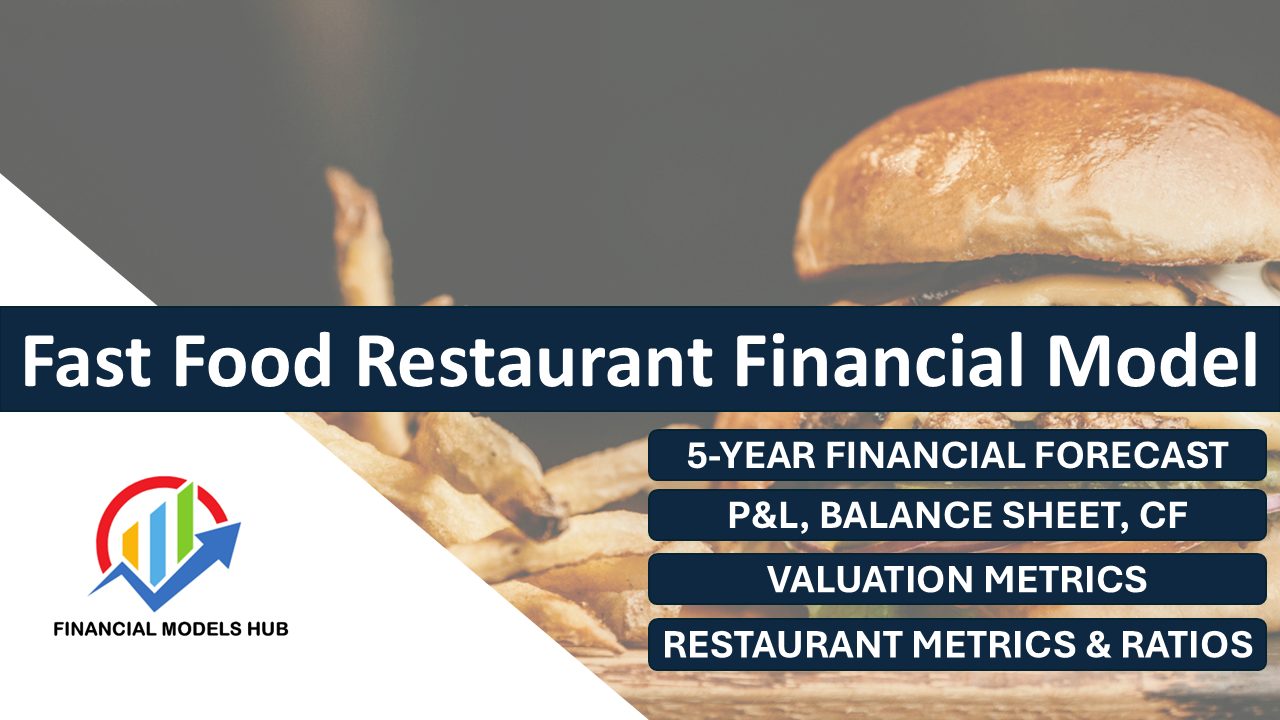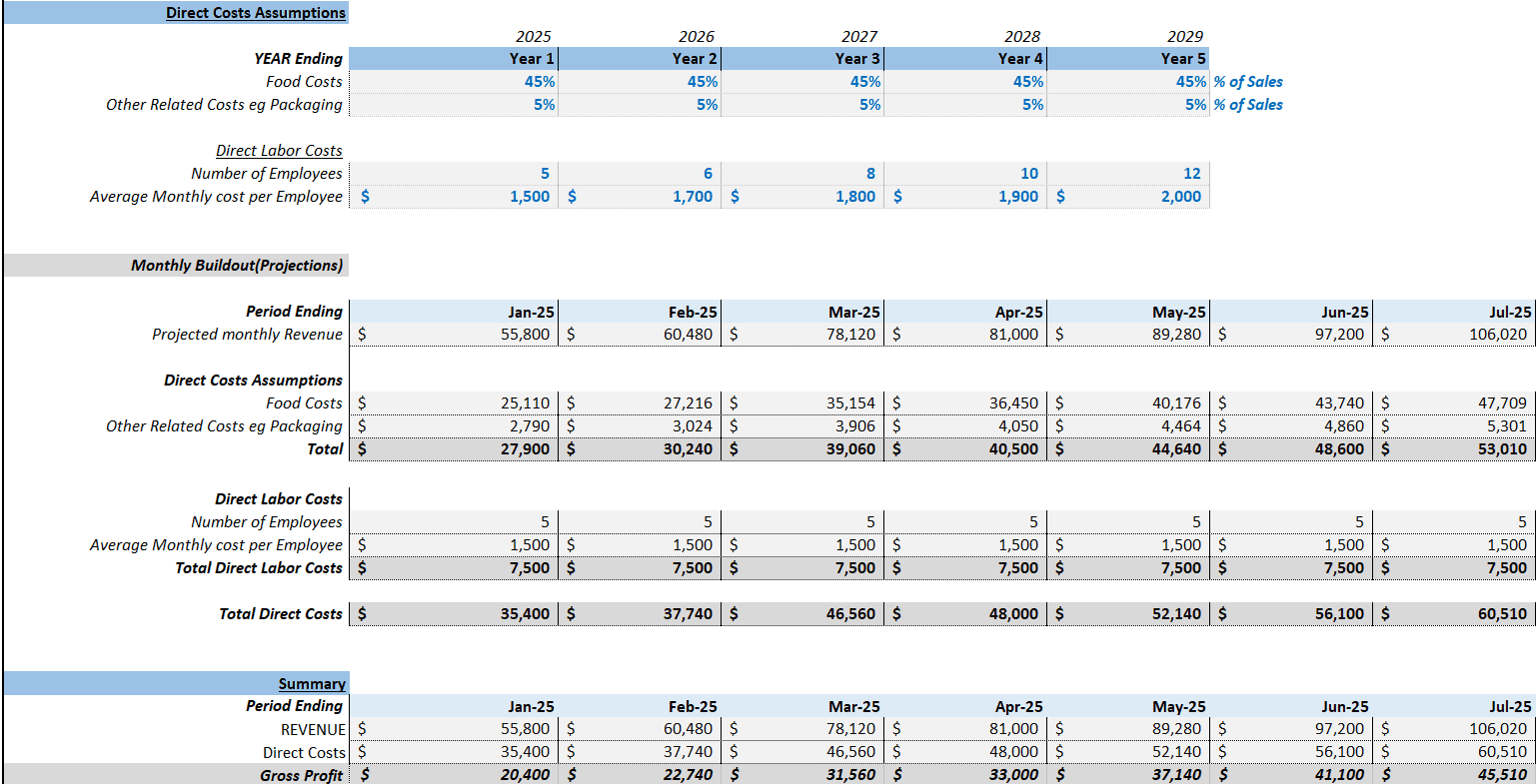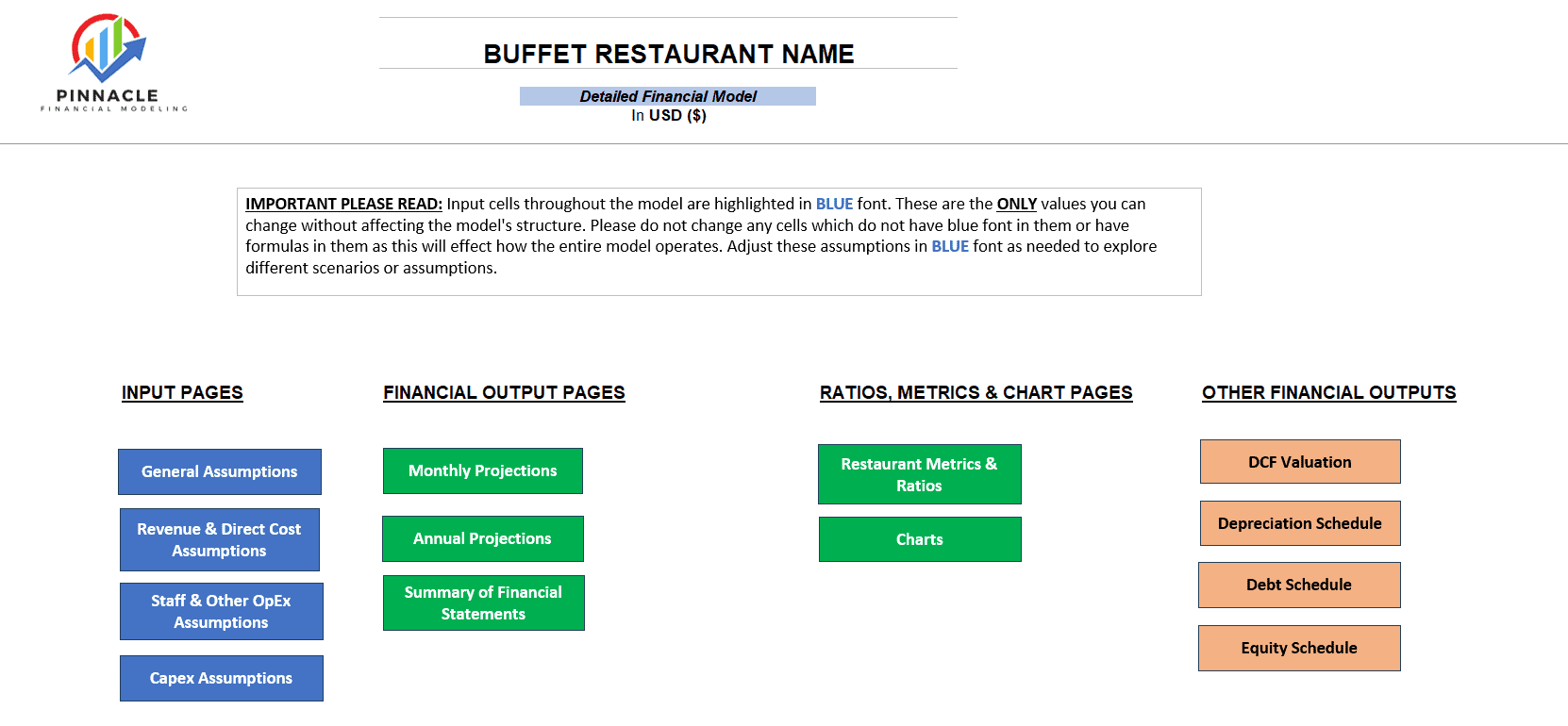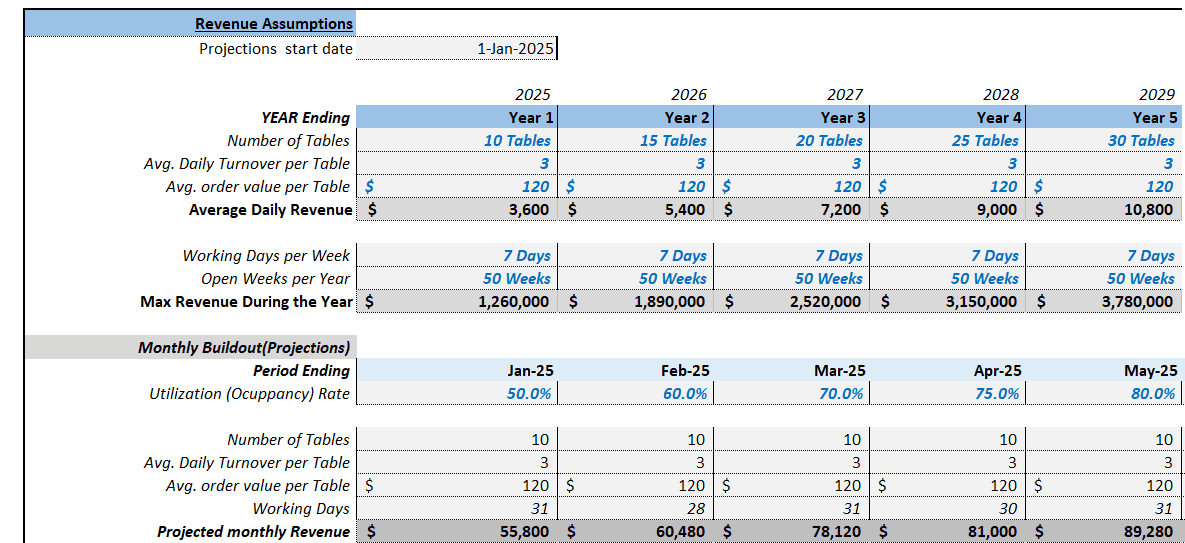Overview: Fast Food Restaurant Financial Model
Featuring specific Restaurant metrics you can track (Average Cover or Restaurant Revenue Per Seat, Revenue Per Available Seat Hour, Table Turnover, Overhead Rate and more), users will easily be able to navigate the model with all input fields highlighted in Blue font. These models are designed to be the perfect financial tool for business owners to use to make decisions for their company and also to provide investors with a snapshot of how the business is currently performing and what the forecasts look like.
General Assumptions
Starts with basic model questions on start date of the model, tax rate assumption, working capital assumptions and funding assumptions.
Revenue and Direct Costs Assumptions
Revenue assumptions are the anticipated factors that drive a company’s income generation over a specific period. These assumptions form the basis for financial projections and are crucial for planning and decision-making. In our model we have included restaurant specific inputs on # of tables, average daily turnover per table, average order value per table, average daily revenue, working days per week, open weeks per year, utilization (occupancy) rate, food costs, direct labor costs.
Operating Expenses Assumptions
Operating expense assumptions are typically based on historical data, industry benchmarks, market trends, and management’s judgment. They are crucial for estimating the total cost of running the business and for determining profitability. Like revenue assumptions, it’s important to regularly review and adjust operating expense assumptions to reflect changes in the business environment and ensure the accuracy of financial forecasts. In our model we have included detailed inputs on Staff Costs (General Manager, Assistant Manager, Executive Chef, Sous Chef, Line Cook, Other). Typical Restaurant related Operational Expenditure items, however, you can add any other expenses you think may be relevant to your business in this sheet.
Capex Assumptions
Capital expenditure (Capex) assumptions refer to the anticipated investments a company plans to make in long-term assets, such as property, plant, equipment, and technology, over a specific period. These assumptions are crucial for financial planning, budgeting, and forecasting, as they impact the company’s cash flow, profitability, and growth prospects. We have included a Fixed asset cost assumption schedule here for the main items likely to be on a company’s capex sheet and also a Use Of Funds assumption list with corresponding pie chart.
Monthly Projections
We have broken down projections on a Month by Month basis when projecting Income Statement, Balance Sheet and Cash Flow Statement items. The monthly projections are provided over a 5 year time frame. This is particularly useful for businesses looking at month-on-month trends and insights in the business, which leads to better decision making and also better budgeting should there be a need to either raise more capital, pursue growth opportunities from excess capital or pay down interest bearing debt. Monthly projections also help a business ascertain what performance may be seasonal in nature when looking at growth projections on a month-over-previous-year’s-month basis.
Annual Projections
The model has Annualized Financial Projections of Income Statement, Balance Sheet and Cash Flow Statement over a 5 year time frame. Annual projections provide an excellent overview of expected revenues, expenses, profits, cash flow, and other key financial metrics for the upcoming year. Annual projections are essential for any company’s strategic planning, budgeting, fundraising, and performance evaluation at any stage of their business cycle.
Summary of Financial Statements
Summarized Financial Statements over a 5 year time frame helps for better snapshots of financial performance. Income Statement, Balance Sheet and Cash Flow Statement all provided.
Metrics & Other KPI
Restaurant specific metrics (Average Cover or Restaurant Revenue per Seat, Average Monthly Customer Headcount, Average Daily Customer Headcount, Revenue per Available Seat Hour (RevPASH), Table Turnover, Overhead Rate), Profitability Ratios, Liquidity Ratios, Asset Turnover Ratios provided.
Charts
Restaurant specific Charts available including Average Daily Customer Headcount, Profitability Margins (Gross Profit Margin, EBITDA Margin and Net Profit Margin), Revenue vs Direct Costs Projections
DCF Valuation
We have included a Discounted Cash Flow (DCF) Valuation model showing the Net Present Value (NPV) of the Business based on a series of growth rates and assumptions. Weighted Average Cost of Capital Assumptions also provided including Risk Free rate, Beta, Risk Premium and Equity Risk Premium. A DCF valuation is a method used to estimate the value of an investment, business, or asset by discounting its expected future cash flows to present value. It is based on the principle that the value of an investment is determined by the present value of its future cash flows. The DCF valuation technique is widely used in finance, investment analysis, and corporate finance for making investment decisions, determining the fair value of securities, and evaluating the worth of businesses.
Depreciation Schedule
Detailed Depreciation Schedule shows additions / disposals to the Fixed Asset Register of the business. Sections included for Computer Equipment, Furniture & Fittings, Others.
Debt Schedule
Debt schedule provided with interest rate assumptions and payback period assumptions included.
Equity Schedule
Equity schedule provided with assumptions on all investments into the business by investors or owners.















































Phoebe R –
This model has been perfect for our restaurant business
Jenny Tse –
Simple to use and what we were looking for. really like all the financials in one place and also seeing how much cash flow is in our business.